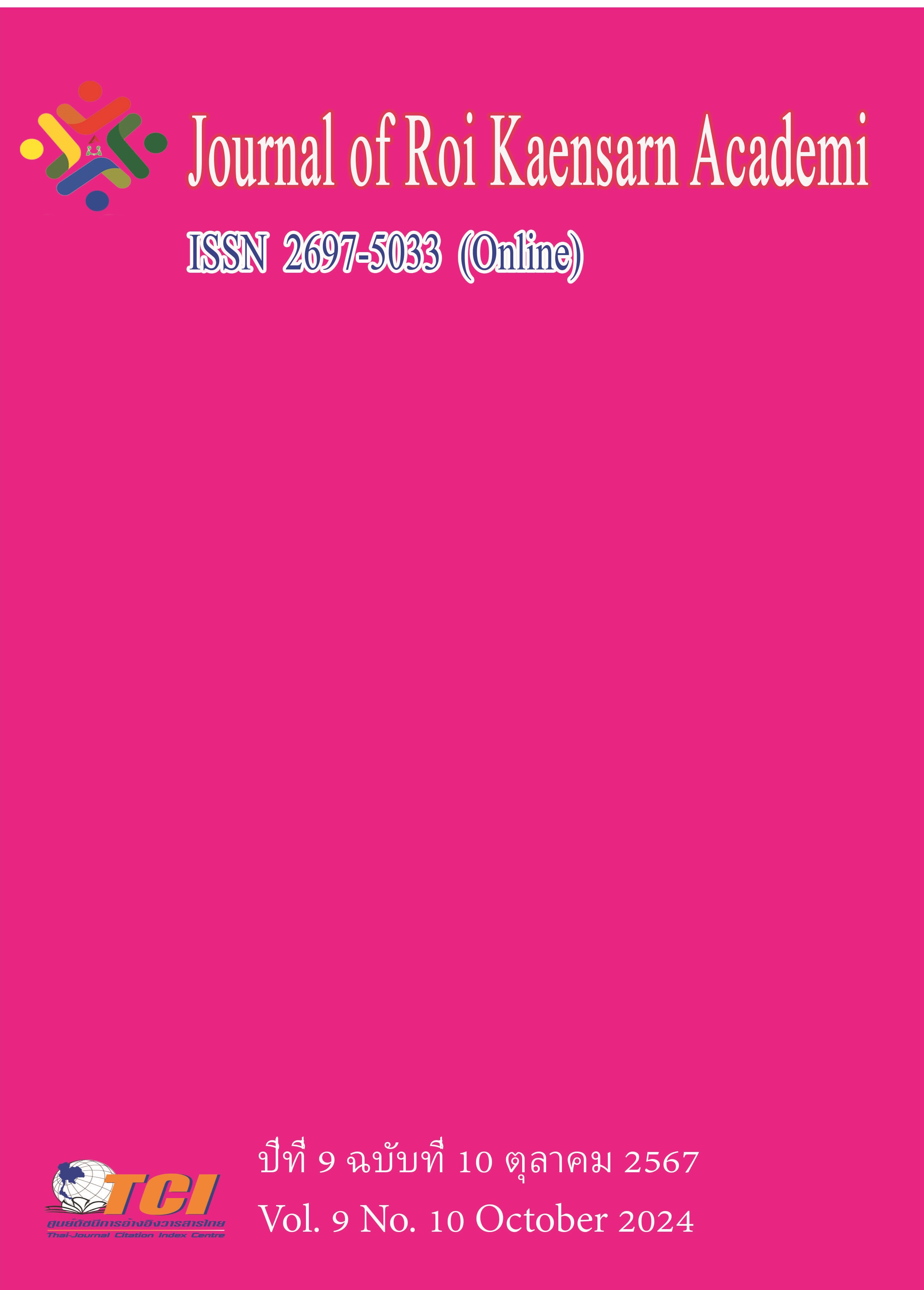The Themes Analysis in Hemingway’s Novels Based on Corpus Techniques
Main Article Content
บทคัดย่อ
This study aims to achieve two key objectives: (1) To investigate Hemingway’s word choices on nouns in his novels that expressed the themes, using wordlist and keywords techniques. (2)To identify the themes expressed in Hemingway’s novels through his word choices on nouns, using the Componential Analysis and AntConc (3.2.1.0). The population for this research includes Hemingway’s nine novels and novellas. The sample is the population, providing a diverse representation of his thematic range. Research instruments for this study include a corpus analysis software tool, which facilitates the examination of linguistic patterns and thematic elements within the texts. For data analysis, descriptive statistics will be employed to quantify the frequency of identified themes and linguistic features, while componential analysis will provide context and depth to the findings, allowing for a comprehensive understanding of how language shapes meaning in Hemingway's works.
The findings of this research reveal 14 unique themes prevalent in Hemingway's novels, including isolation, war, love, and the human condition. The analysis demonstrates that Hemingway's specific word choices and linguistic patterns significantly influence the interpretation of these themes, often reflecting his sociocultural context and personal experiences. For instance, the frequent use of terse, economical language underscores themes of existential struggle and emotional distance. Based on these findings, it is suggested that educators incorporate corpus methods into their curriculum, enabling students to engage with texts more analytically. This approach not only enhances their understanding of thematic complexity but also develops critical thinking skills essential for literary analysis. Additionally, further research could explore the application of corpus methodologies to other authors or genres, thereby broadening the scope of literary studies and enriching discussions around language and themes across a wider literary landscape.
Article Details
References
Abrams, M. H., & Harpham, G. G. (2009). A glossary of literary terms (8th ed.). Cengage Learning.
Anthony, L. (n.d.). Laurence Anthony's homepage. Retrieved May 6, 2024, from https://www.laurenceanthony.net/.
Chang, Y. X. (2022). The survey of American literature. Nankai University Press.
Culpeper, P. (2015). Historical sociolinguistics: Language change in English. Cambridge University Press.
Ganjoo, P. (2014). War and love in Ernest Hemingway’s A Farewell to Arms. Research Scholar: An International Refereed Journal of Liberty Exploration, 2(4).
Hoffman, A. (2018). The economy of language: Hemingway's word choices and narrative style. Journal of American Literature, 90(4), 567-580. https://doi.org/10.1234/jal.2018.567
Kholnazarova Rustam Qizi, D. (2024). The First World War and the appearance of the theme of the “Lost Generation” in literature. International Journal of Social Science and Interdisciplinary Research, 13(05).
Lakshmi, K. R. (2019). Hemingway depicts the conflict between nature and humans in The Old Man and the Sea. Literature Studies Journal, 12(3), 45-58. https://doi.org/10.1234/lsj.2019.123456
Lancaster University. (n.d.). Free CLAWS web tagger. Retrieved August 10, 2024, from https://www.lancaster.ac.uk/researchportal/en/projects/free-claws-web-tagger.
Library Genesis. (n.d.). Library Genesis. https://libgen.is/
Michael, M. (2014). Corpus linguistics: Method, theory and practice. Routledge.
Nida, E. A. (1975). Language, culture, and translating. John Benjamins Publishing Company.
Oxford Learner’s Dictionaries. (n.d.). https://www.oxfordlearnersdictionaries.com/
Ruland, R. A. (1991). Hemingway: A biography. HarperCollins.
Sinclair, D. (1991). Corpus, concordance, collocation. Oxford University Press.
Tier, W. (1931). Componential analysis in linguistics. University of Chicago Press.
